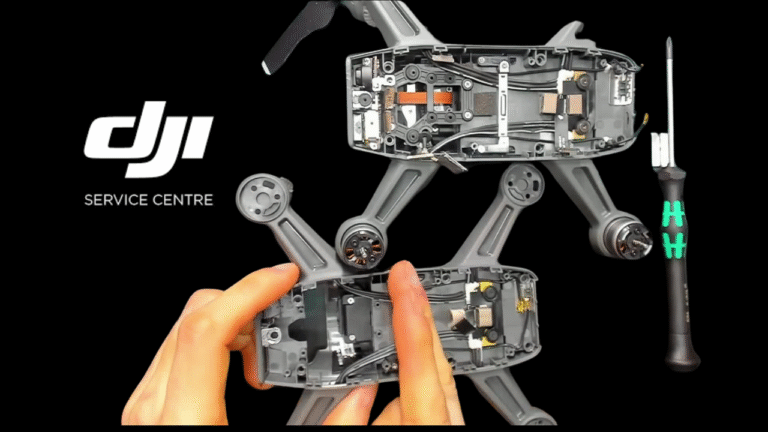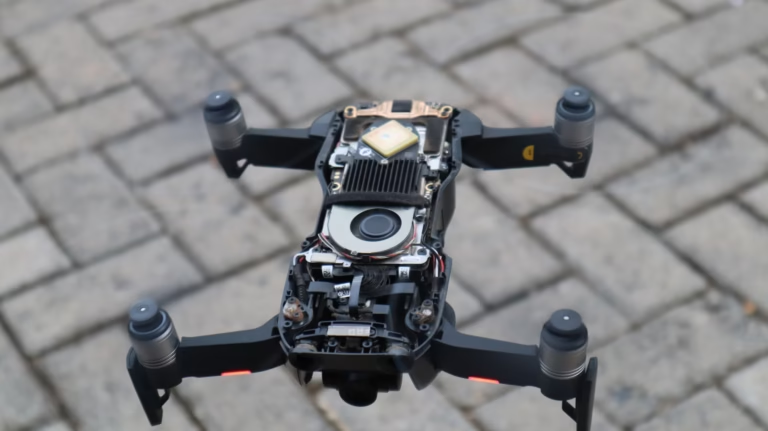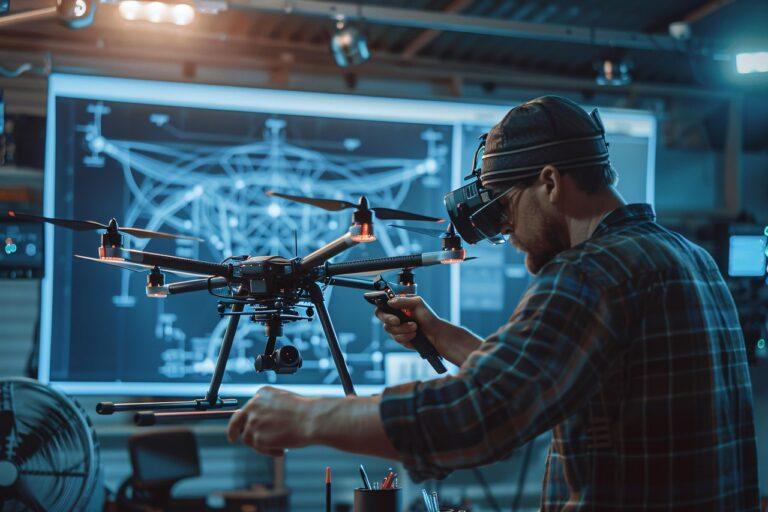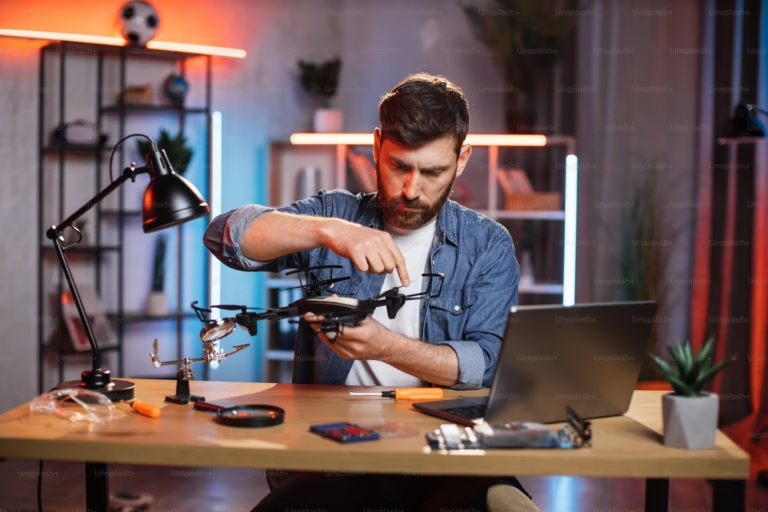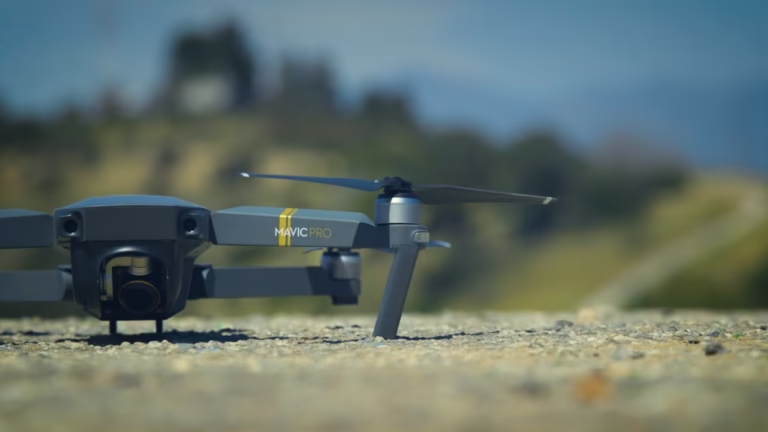
As a drone enthusiast who’s spent countless hours flying, testing, and marveling at the capabilities of modern aerial tech, I can confidently say that DJI continues to dominate the consumer drone market. The best DJI drones offer unparalleled performance, cutting-edge camera systems, and user-friendly features that cater to everyone from beginners capturing their first aerial selfie to professional cinematographers shooting Hollywood-grade footage.
In this comprehensive guide, I’ll dive into the top DJI drones, sharing my insights on their features, real-world performance, and why they stand out in a crowded market. Let’s soar into the details!
Related Articles:
Why DJI Drones Are the Gold Standard
DJI, founded in 2006 by Frank Wang in Shenzhen, China, has grown from a small startup to a global powerhouse, commanding over 90% of the consumer drone market as of June 2024. Their drones are renowned for their reliability, advanced technology, and versatility.
From the foldable Mavic series to the compact Mini lineup, DJI’s innovations like OcuSync transmission, Hasselblad cameras, and omnidirectional obstacle avoidance set the benchmark for the industry. As someone who’s flown drones from multiple brands, I can attest that DJI’s combination of intuitive controls, robust build quality, and stunning image output is hard to beat.
Top 5 Best DJI Drones
1. DJI Mavic 4 Pro: The Ultimate Professional Drone
The DJI Mavic 4 Pro is the crown jewel of DJI’s lineup, and after flying it myself, I’m convinced it’s the best consumer drone available (outside the U.S., due to market restrictions). Released globally on May 13, this drone boasts a triple-camera system, including a 100MP Four Thirds Hasselblad camera that captures breathtaking stills and 6K video at 60fps. The 70mm and 168mm telephoto lenses offer unmatched versatility for framing distant subjects, making it a favorite for professional videographers and photographers.
What sets the Mavic 4 Pro apart is its RC Pro 2 controller, a game-changer with a 7-inch mini LED touchscreen that’s bright enough (2000 nits) to use in direct sunlight. Flying this drone feels like piloting a mini aircraft, with responsive controls and a 43-minute flight time powered by a 6654 mAh battery. Its omnidirectional obstacle avoidance and ActiveTrack 5.0 make navigating complex environments like dense forests or urban settings a breeze. However, at over 250g, it requires FAA registration in the U.S., and its premium price (around $2,000) may deter casual users.
Best For: Professional filmmakers, commercial photographers, and enthusiasts who demand the best.
Pros:
- Industry-leading 100MP Hasselblad camera
- 6K/60fps video with rich color profiles
- Advanced obstacle avoidance
- Long flight time and robust wind resistance
Cons:
- Not available in the U.S. due to tariffs
- Expensive for hobbyists
- Requires registration due to weight
2. DJI Air 3S: The Best All-Rounder
The DJI Air 3S strikes a perfect balance between portability, performance, and price, making it my top recommendation for most users. I’ve flown this drone through windy coastal cliffs and crowded city parks, and its 360-degree obstacle avoidance kept it safe every time. Equipped with dual cameras, a 24mm wide-angle and a 70mm telephoto, both with 1-inch sensors, it delivers crisp 4K video and 50MP stills. The 45-minute flight time and O3+ transmission system (up to 15km range) ensure you can explore far and wide.
The Air 3S shines for creators who want professional-grade footage without the Mavic 4 Pro’s heft or cost. Its compact design folds down to fit in a backpack, and the DJI RC 2 controller with a built-in screen simplifies setup. At 724g, it requires FAA registration, but its versatility makes it worth the paperwork. Priced around $1,200, it’s a steal for what it offers.
Best For: Hobbyists, content creators, and semi-pros looking for value and versatility.
Pros:
- Dual-camera system for creative flexibility
- Excellent 4K video and 50MP photos
- Long battery life and reliable obstacle avoidance
- Affordable for its feature set
Cons:
- Requires FAA registration
- No 6K video capability
3. DJI Mini 4 Pro: The Best Lightweight Drone
For pilots who want to skip FAA registration while still getting premium features, the DJI Mini 4 Pro is unbeatable. Weighing just 249g, this ultralight drone is my go-to for travel, slipping easily into a jacket pocket. Despite its size, it packs a 48MP 1/1.3-inch sensor that shoots 4K/60fps HDR video with stunning clarity, even in low light. I’ve captured vibrant sunsets and fast-moving subjects with ease, thanks to its 10-bit D-Log M color profile and True Vertical Shooting for social media.
The Mini 4 Pro’s omnidirectional obstacle avoidance and 34-minute flight time (or 45 minutes with the extended battery) make it surprisingly capable. Its compact remote and O3+ transmission ensure reliable control up to 20km. Priced around $759, it’s perfect for beginners and pros alike who prioritize portability.
Best For: Travelers, beginners, and creators who need a sub-250g drone.
Pros:
- No FAA registration required
- Compact and travel-friendly
- High-quality 4K HDR video
- Advanced obstacle avoidance
Cons:
- Limited wind resistance compared to heavier models
- Smaller sensor than Air 3S or Mavic 4 Pro
4. DJI Flip: The Best Drone for Beginners
The DJI Flip is a revelation for first-time pilots, and I’ve seen newcomers master it in minutes. At 249g, it avoids FAA registration and comes with built-in propeller guards for safe indoor and outdoor flights. Its 4K camera with a 1/2-inch sensor delivers solid video and 12MP stills, while forward obstacle sensors and a simplified control system (including smartphone app or on-drone controls) make it forgiving for novices.
I tested the Flip for vlogging and selfies, and its Smart Snaps feature with Dolly Zoom added a cinematic flair to my shots. The recent firmware update (v01.00.13.00) improved skin tone accuracy, making it great for social media content. Priced around $499, it’s an affordable entry point into DJI’s ecosystem.
Best For: Beginners, vloggers, and casual users.
Pros:
- Easy to fly with propeller guards
- No FAA registration needed
- Affordable and feature-rich
- Great for social media content
Cons:
- Limited camera compared to higher-end models
- Shorter flight time (around 20 minutes)
5. DJI Avata 2: The Best FPV Drone
For thrill-seekers, the DJI Avata 2 delivers an exhilarating first-person view (FPV) experience. Flying this drone with DJI’s FPV goggles feels like you’re soaring through the air, weaving through trees or racing at speeds up to 60mph. Its 4K/60fps camera with a 155-degree ultra-wide lens captures dynamic, immersive footage, perfect for action sports or creative projects.
The Avata 2’s propeller guards and compact 410g design make it durable and crash-resistant, which I appreciated during my early FPV attempts. The DJI Motion Controller simplifies flying with intuitive hand movements, though it can induce motion sickness for some (take breaks!). Priced around $999 with the goggles, it’s a niche but thrilling choice.
Best For: FPV enthusiasts, action videographers, and adrenaline junkies.
Pros:
- Immersive FPV experience
- Durable with propeller guards
- High-quality 4K ultra-wide video
- Intuitive motion controls
Cons:
- Requires FPV goggles, increasing cost
- Can cause motion sickness
- Shorter flight time (18 minutes)
How to Choose the Right DJI Drone
Picking the best DJI drone depends on your needs, budget, and skill level. Here are key factors to consider:
- Purpose: Are you shooting professional films, vlogging, or just having fun? The Mavic 4 Pro is ideal for pros, while the Flip suits casual users.
- Weight: Sub-250g drones like the Mini 4 Pro and Flip avoid FAA registration, but heavier models offer better stability and features.
- Camera: Higher-end models like the Mavic 4 Pro and Air 3S offer larger sensors and multiple lenses for superior image quality.
- Flight Time: Look for 30+ minutes for extended shoots (Mavic 4 Pro, Air 3S, Mini 4 Pro).
- Budget: Prices range from $499 (Flip) to $2,000 (Mavic 4 Pro). Consider Fly More Combos for extra batteries and accessories.
- Regulations: Check local drone laws, especially for heavier models requiring registration or permits.
I always recommend starting with a budget-friendly model like the Flip or Mini 4 Pro to hone your skills before investing in a pro-grade drone.
FAQs About DJI Drones
Q: What is the best DJI drone for beginners?
A: The DJI Flip is the best for beginners due to its ease of use, propeller guards, and sub-250g weight, which skips FAA registration. The Mini 4 Pro is another great option for slightly more advanced beginners who want better camera quality.
Q: Do I need to register my DJI drone with the FAA?
A: Drones weighing 250g or more (e.g., Mavic 4 Pro, Air 3S, Avata 2) require FAA registration in the U.S. Sub-250g drones like the Mini 4 Pro and Flip are exempt for recreational use but may need registration for commercial purposes.
Q: Are DJI drones banned in the U.S.?
A: As of June, DJI drones are not banned in the U.S., but there’s ongoing uncertainty due to legislative efforts like the Countering CCP Drones Act. The Mavic 4 Pro is not available in the U.S. due to tariffs, but other models are widely sold. Always check current regulations.
Q: Which DJI drone has the best camera?
A: The Mavic 4 Pro has the best camera, with a 100MP Four Thirds Hasselblad sensor and triple-lens system supporting 6K/60fps video. The Air 3S is a close second for its dual-camera setup with 1-inch sensors.
Q: How long can DJI drones fly on a single charge?
A: Flight times vary: Mavic 4 Pro (43 minutes), Air 3S (45 minutes), Mini 4 Pro (34–45 minutes with extended battery), Flip (20 minutes), and Avata 2 (18 minutes). Real-world conditions like wind and temperature can reduce these times.
Q: Can DJI drones fly in bad weather?
A: Most DJI drones, like the Mavic 4 Pro and Air 3S, can handle moderate winds (up to 26.8mph) and light rain, but they’re not fully waterproof. Avoid flying in heavy rain, snow, or extreme cold to prevent damage.
Q: What’s the difference between FPV and standard DJI drones?
A: FPV drones like the Avata 2 use goggles for a first-person view, offering a thrilling, immersive experience suited for racing or dynamic shots. Standard drones (e.g., Mavic, Air, Mini) prioritize stability, camera quality, and ease of use for photography and videography.
Q: Are DJI drones safe to fly?
A: Yes, DJI drones are safe when flown responsibly. Features like obstacle avoidance, Return to Home, and GPS stabilization reduce crash risks. Always follow local regulations, avoid restricted airspace, and maintain line-of-sight.
Q: Can I use DJI drones for commercial work?
A: Yes, but you’ll need an FAA Part 107 license in the U.S. for commercial operations. Drones like the Mavic 4 Pro and Air 3S are popular for professional photography, videography, and inspections due to their advanced cameras and reliability.
Q: How do I update my DJI drone’s firmware?
A: Connect your drone to the DJI Fly app or DJI Assistant 2 software on a computer. The app will notify you of available updates, which you can download and install following on-screen prompts. Always update before flying to ensure optimal performance.
Tips for Getting the Most Out of Your DJI Drone
- Practice in Open Spaces: Start in wide-open areas to master controls and avoid obstacles.
- Use Intelligent Flight Modes: Features like ActiveTrack, Hyperlapse, and QuickShots add professional flair to your shots.
- Invest in Fly More Combos: Extra batteries, charging hubs, and carrying cases enhance your flying experience.
- Check Local Laws: Use apps like FAA’s B4UFLY to ensure you’re flying legally and safely.
- Edit Your Footage: Apps like Adobe Premiere or DJI’s Mimo can elevate your videos with color grading and transitions.
Conclusion
The best DJI drones cater to every pilot, from the beginner-friendly DJI Flip to the pro-grade Mavic 4 Pro. As someone who’s flown these drones in diverse conditions from serene beaches to bustling cities, I can vouch for their reliability, innovation, and sheer fun. The Air 3S stands out as the best all-rounder for its balance of price and performance, while the Mini 4 Pro is a must-have for travelers.

